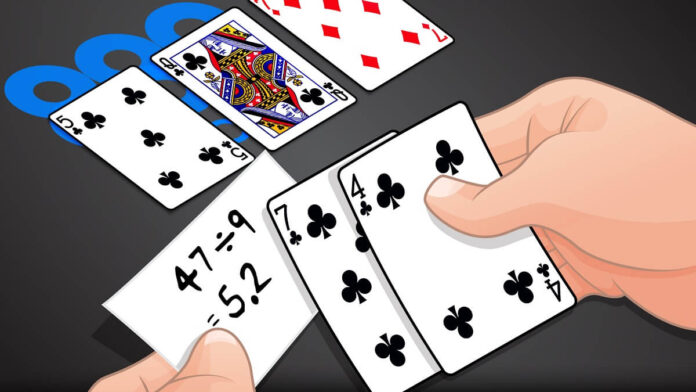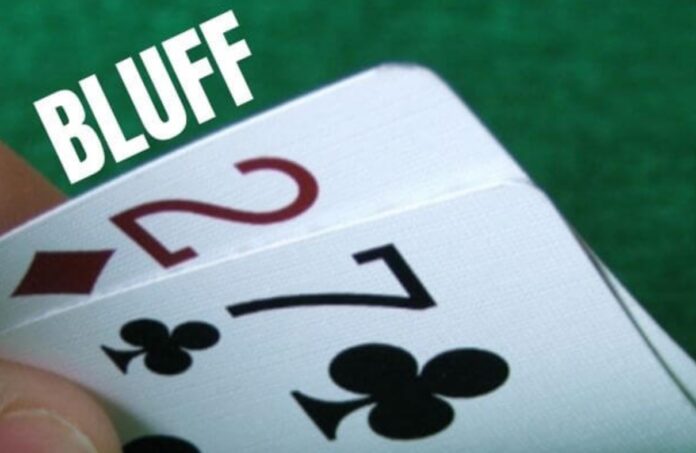To be successful in poker, it’s crucial to have skills beyond just luck. The game requires strategy and mental fortitude. Check out this article for suggestions on effective poker strategies that can give you an edge over other players. From understanding pot odds and position play to bluffing and bankroll management, these techniques will give you an edge over other players at the poker table. So if you’re ready to start playing like a pro, let’s read on for some winning tips!
Understanding Pot Odds
Pot odds are an important concept to understand in poker. It’s basically the ratio of money already in the pot compared to the amount you need to call. For example, if there is $20 in the pot and it costs you $5 to call, then your pot odds are 4:1. By converting this ratio to a percentage and then comparing it to your winning odds, you can easily determine whether or not you should call. To convert your pot odds, divide the call amount by the sum of the pot and the call amount. In the example above, you would divide 5 by 25 (20+5) to get 20%.
Next, we’ll calculate your chances of drawing a winning hand. Pretend your starting hand is two hearts, and the flop has two other hearts. Using the rule of 4 and 2 (multiply your outs by 4 on the flop and 2 on the turn), we know that the chance of you hitting a flush is roughly 36%. Because this is greater than your pot odds of 20%, you should call.

Position Play
Position play is another important concept in poker. Simply put, it’s the idea of taking advantage of the position you have at the table. Basically, if you’re in a late position, the other players will have to act before you, meaning you have more information than those earlier in the hand and thus can make more informed decisions.
Conversely, if you’re in an early position, you have to act before anyone else and therefore need to make decisions with less information. Experienced players usually suggest playing from an early position only when you have a strong hand. This is because strong hands offer better odds of winning even when you’re unaware of what other players are holding.
Bluffing Strategies
Bluffing is an essential part of poker, and mastering it can take your poker game to the next level. The key is to understand when and how to bluff effectively. Generally, it’s best to only bluff in late position, as you’ll have more information on the other players and can take advantage of it.
It’s also important to be aware of your opponents’ tendencies. If they tend to fold often when facing a bet from a late position, then this is an opportunity to bluff them out of the pot. Lastly, remember that it’s less risky to bluff when the pot is small, as this means you won’t have to bet too much money to give your opponents unfavorable pot odds.

Bankroll Management Tips
Bankroll management involves setting a strict budget for yourself and sticking to it. Make sure that your bankroll represents an amount of money you can afford to lose, as poker involves some inevitable losses along the way. Don’t be afraid to walk away from the table if you’re losing; quitting while you still have money in your pocket is often a smart move.
Additionally, if you’re playing to practice or just as a form of entertainment, consider playing poker online. Online poker sites not only offer low-stakes games but also provide free poker games. Most poker sites even offer freeroll tournaments, giving you the chance to win real money without investing any money.
Knowing When to Fold
While it’s tempting to call or raise every hand, in most cases, this isn’t wise. A common rule of thumb is to only play hands you feel have a good chance of winning. If you don’t have a strong starting hand, it’s often better to fold and save your chips for a better opportunity.
A good starting hand is either strong by itself or has the potential to make a strong hand after the flop. Hands like big pairs and high suited connectors are all strong starting hands that can give you a better chance of winning in the long run. On the other hand, starting hands like unsuited or disconnected low cards should usually be folded immediately, as the chances of them turning into a winning hand are too low to justify the risk.

Exploiting Your Table Image
The table image is the perception your opponents have of you based on how you’ve played throughout the session. If you’ve been playing tight and sticking to premium hands, your opponents will likely see you as a tighter player. On the other hand, if you’ve been playing a lot of hands, they’ll likely see you as a loose player.
Knowing how your opponents perceive you is key to exploiting your table image. For example, with a tight table image, you can exploit their perception by playing a wider range of hands and being aggressive with your betting. Conversely, with a loose table image, you can tighten up and surprise them with a strong hand.
Takeaway
From understanding the importance of position and bluffing strategies to managing your bankroll and exploiting your table image, these are all essential concepts for any successful poker player. With practice and dedication, you’ll soon be able to master these skills and start sweeping the tables at GGPoker, the world’s largest poker room!









